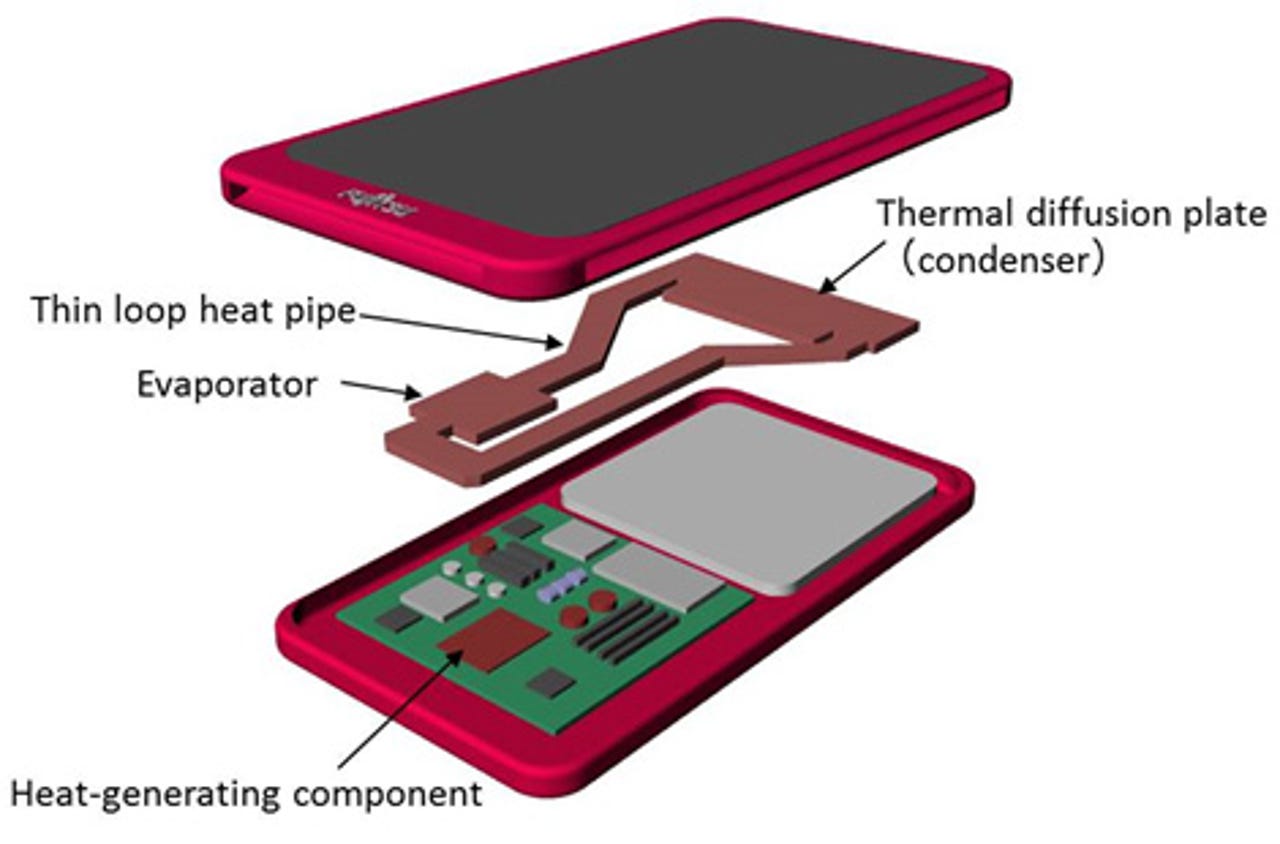Fujitsu has a cool liquid answer to hot spots in smartphones


One of the side effects of packing smartphones with ever more powerful components into smaller spaces is heat, which can be uncomfortable for the user and cause wear and tear on components.
As Fujitsu notes, the conventional method for managing the excess heat generated by components in a smartphone has been to install sheets of metal or graphite with relatively high thermal conductivity. But the company claims that the thermal conductive properties of these materials have reached their limit.
Fujitsu's answer to this is the 'loop heat pipe', a thin heat-transfer device filled with a liquid coolant that works to move heat away from the hot component towards a cooler part of the device.
Read this
Heat pipes aren't new to the computer industry and are already in use to move heat away from CPUs. But at less than 1mm thick, Fujitsu sees potential for its device to be attached to the CPU of a smartphone or tablet. It also claims that its design means it won't drain the device's battery.
"A loop heat pipe is a heat-transfer device that consists of an evaporator that absorbs heat from the heat source and a condenser that dissipates that heat away, with the two components connected by pipes into a loop," the company said.
"A working fluid is encapsulated inside this closed loop as a coolant. The heat from the heat source evaporates the coolant, and the energy that goes into evaporating the coolant is taken away from the heat source, lowering its temperature. It is based off of the same principle used when sprinkling water on pavement to reduce heat."
The loop contains a vapour phase (where the heat is moved away from the CPU) and a liquid phase where that heat is dissipated and returned to the hot spot.
Stacked sheets of copper with tiny pores inside the evaporator mimic a sponge to create a "capillary action" that drives the liquid around the loop, ensuring the device's orientation won't disturb its ability to transfer heat.
On top of this, since the device relies on heat from the hot component, it won't cause a drain on the battery.
"Because this loop heat pipe uses the heat from the heat source to power thermal transfer, without using an external pump or other energy source, it does not increase the overall energy consumption of the device in order to diffuse heat, allowing for convenient and comfortable usage of electronic devices," Fujitsu said.
Read more on smartphones